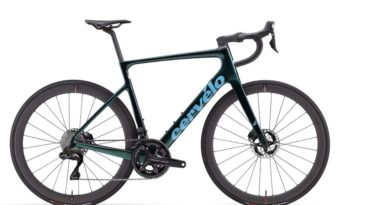Bike Matrix; a software solution set to rock your world (IMHO)
When was the last time you heard someone describe a solution to a long standing, costly, business problem and thought, “why has nobody already done that?”
‘What’s the problem?’ you ask. Compatibility. Parts. Bikes, old and new. Stock components replacement, including compatible non-OE options. Upgrades as well.
4 scenarios:
- In most bike shops, multiple times a day, someone working on the shop floor will ask workshop staff, ‘will this part work on that bike, fitted with this existing component?’ Workshop workflow disruption is costly, and quantifiable when workshop labour is billed based on time per task.
- Not being able to confidently give customers an immediate answer, also costly, be that in person, or over the phone. ‘Let me get back to you’ isn’t great in the age of the internet.
- Servicing bikes in-house or on-site; you can’t see the parts you might need until you get the bike. Wouldn’t it be good if you could check parts availability before you’ve seen the bike?
- Now imagine you’re an online retailer and you are losing hundreds of ‘abandoned basket’ transactions daily due to confusion about parts compatibility. Big money, left on the table, simply because customers are unsure if the part is right for them. Conversion rates are already low enough.
 Welcome to Adam Townsend and Bike Matrix; a software solution which directly increases sales and reduces post sale costs (returns, exchanges, restocking, refunding).
Welcome to Adam Townsend and Bike Matrix; a software solution which directly increases sales and reduces post sale costs (returns, exchanges, restocking, refunding).
Bike Matrix, first and foremost a B2B solution, enables the global bike industry to find parts specifically compatible with any given bike, filtering out all incompatible options.
Starting the conversation I ask Adam for a use case – a real business example – and numbers, to give some sense of business cost (and opportunity), based on parts compatibility knowledge challenges.
(In October 2021) I started working for an online only mountain bike ecommerce retailer, working in customer service. I moved into what they called product content; I was writing descriptions and gathering images and essentially maintaining all the product listings.
- In customer service we saw the direct effect – customer hesitation at the point of purchase (basket / shopping cart abandonment) and customers relying heavily on customer service to make an informed decision.
- We saw complaints when customers got a part home and realised it’s not right (that sometimes boiled down to the way something’s worded, also whether their particular model of brake calliper was included in the list of compatible parts)
- Then we started to see the actual cost of that item being returned or refunded (the gift card because it was our fault, or those return items that arrive damaged, or tags missing, so the item is devalued and has a cost both to resolve and put back into stock.)
On top of this you also have a hard to measure burden that the whole process places on a customer service team. We’ve done some case studies, and on this company:
- 58%; the percentage of their sales which are parts (that would be in our database).
- 1.9-2.3%; the typical conversion rates witnessed.
Next we asked:
- What would happen if we were able to increase the conversion rate on that 58% of their sales by up to 30%?
Now factor in:
- A 30% reduction in returns
- Subtract the cost of reduction in value + the actual physical cost of processing returns.
Outcome:
- A small increase in average order value because of the confidence that customers feel.
- For this business, we started talking about $3.7 million a year in additional revenue.
When you start talking about a 30% increase in conversion rates, which are typically low in the bike industry, you can immediately see the impact an increase of 30% delivers for a business.
At this point we could measure real value, and identify a scalable, accessible, solution which delivers irrespective of your business being a single store or a multinational online retailer.
I’m interested to know, of the people you’ve talked to so far, and what kind of reactions you’ve had to Bike Matrix.
I’ve had a version of this conversation with a multi-location retailer keen to beta test, with bike manufacturers, where we’ve now got traction, and we’ve received information from some significant fifteen product manufacturers. Shimano have shown their support, we’ve had a really good conversation with SRAM, and are in discussion with many others.
When you talk to the COO of a highly respected, globally recognised bike manufacturer and they not only want to send you their product information for inclusion in the database, but they want your product to power a “special project” and also to unify their global service partner network…. that’s what you’d refer to as product validation, right?
Am I right in thinking the auto industry uses a solution like this, and it’s seen as an absolutely essential tool whether that’s customer facing, or working as internal support?
Ohh absolutely. The inspiration came from the automotive industry. We’ve kinda made connections with a company in Christchurch called partly.com, who’ve built a global automotive vehicle and parts database, and they’re growing exponentially, seeing massive increases in online conversion rates, reductions in returns. All things you’d expect when taking the doubt out of sales in a compatibility based, transactional, environment.
In the cycling industry, who do you see using Bike Martix?
Just as in auto there’s a host of use cases which we’ve already mapped out. While the mid to large ecommerce platforms are essentially our core focus, when we launch, we’ve got plans for:
- Customer facing apps with the ability to customise bikes.
- Integrations with popular Web and POS platforms.
- Potential for wholesaler and distributor product information management.
We’ve already had several notable manufacturers ask us for the product when it’s ready because they want it on their website.
Its universally applicable, and what we’ve tried to do with our approach to it is build a back end that can be integrated into the entire industry. We want it to be an industry product that is supported by the industry and used by the industry for the for the greater good of the customers.
- Critically, all the compatibility information is at a component level.
For example: You buy your $5 consumer app for Bike Matrix, and now you can, by searching a product list or by scanning a barcode, swap in a new crank and bottom bracket. What that does is gives you a unique bike ID which you take with you when you log into the retailer (who is using Bike Matrix on their site). This will use the compatibility information for your unique customised bike compare compatibility options.
Here Bike Matrix gives you the ability to custom build a bike from frame set up, simply by scanning barcodes as you build.
- For a custom bike manufacturer, the ability to ‘virtually’ build a bike – with all component compatibility fully optimized – could be a game changer. Customers can now build their dream bikes with all components accurately detailed, get an accurate price, and place an order.
- Something else we’re considering; the ability to test build or configure a bike to find out how much the complete build will weigh, based on components selected.
You’re building Bike Matrix with an API, enabling a seamless integration into a host of different environments?
The stage we’re out at the moment is that I’ve designed the algorithms and the fitment codes. I’ve built 2 versions with all the required formula in it. I’ve got to the point now where I can select 1 of the bikes that are loaded in the database and I can swap out any 1 of the 30 something components that make up the bike. My algorithms tell me if they are compatible, or not, and if not, why not.
 So we’re at a stage now where we’ve just brought on a Tech Co-Founder, Adam Barnes. His background, in technology solutions development and delivery, comes from working with some of the biggest names in the financial services sector, including RBS and Barclays Bank, as well as 13 years experience at Datacom, Australasia’s largest home-grown tech company; FY22 revenue $1.45bn NZ Dollar. He will lead us into beta testing with one of the larger retail chains in New Zealand.
So we’re at a stage now where we’ve just brought on a Tech Co-Founder, Adam Barnes. His background, in technology solutions development and delivery, comes from working with some of the biggest names in the financial services sector, including RBS and Barclays Bank, as well as 13 years experience at Datacom, Australasia’s largest home-grown tech company; FY22 revenue $1.45bn NZ Dollar. He will lead us into beta testing with one of the larger retail chains in New Zealand.
As we populate the database with bike and component data, we’ll develop the solution an API that will enable the integration into existing software currently being used in across the industry.
You mentioned that partly.com saw an increase in sales and a significant reduction in returns. As a business solution, in any industry, when you talk about the kind of numbers you mentioned earlier, business people’s eyes light up.
Yeah, and the bigger the store, the broader parts availability on inventory, the greater the potential for confusion. Bike Matrix reducing confusion adds increasingly greater value as the stock holding increases.
You can see why this appeals strongly to both recreational sport and cycling as transport focused businesses.
- Cycling as transport customers, with a growing number eBike riders, simply expect the retailer to know what’s needed. Any doubt dents customer confidence.
- Whereas recreational sport customers increasingly self-serve, doing research before calling a shop, or going to an online retailer.
Bike Matrix maps into both bricks and mortar stores challenges, and online retailers challenges, and you solve lost revenue problems for both.
Yeah, that’s right. And I think one of the things that surprised us when we did our data validation was in speaking to brick-and-mortar stores, they expressed that there was a little bit of friction between the salespeople and the mechanics, where the salespeople interrupt the mechanics to ask advice on what bottom bracket a customer’s bike needs. The store managers are expressing to us that they would like our product to empower the salespeople, those who actually provide service to the customer, reducing the friction and let the two departments refocus on their core roles.
I know I’ve been a mechanic for 14 years, workshop manager, my partner has also been a mechanic since about 2014, and a workshop manager. We’ve lived the experience. Add into this managing a 200-bike rental fleet, and the time and revenue lost to these compatibility questions becomes really significant. Does this non OE pad work in this calliper? Will this BB work with this frame and crankset? What headset bearing size is this bike needing? Can this wheelset run an upgrade from 10 to 12 speed with a freebody swap? It’s endless. All opportunities for a sale. All needing expert knowledge.
With Bike Matrix, we serve up only those compatible components. Fast, accurate, information. Priceless, and measurably valuable.




